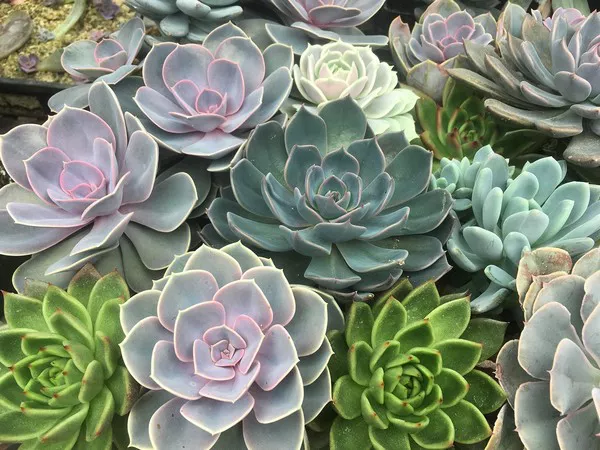Succulents have gained immense popularity in recent years due to their captivating appearance and low-maintenance nature. These resilient plants have adapted to thrive in arid conditions by storing water in their fleshy leaves and stems. While they are known for their ability to survive with minimal care, it’s crucial to understand when your succulent needs water to ensure they stay healthy and vibrant.
Understanding Succulent Anatomy
Before diving into the specific signs of water requirements, it’s essential to comprehend the unique anatomy of succulents. Succulents have specialized structures, such as water-storing leaves and thick stems, that enable them to survive in arid environments. These adaptations allow them to retain moisture for extended periods, making them different from other houseplants.
Factors Influencing Succulent Watering
Watering succulents is a delicate balance, as they are highly susceptible to overwatering, which can lead to rot. Several factors influence how frequently you should water your succulent, including the type of succulent, the environment it’s in, the season, and the potting medium used. Each of these factors plays a vital role in determining the succulent’s water requirements.
Succulent Types and Their Watering Needs
Succulents come in a wide variety of species, each with its unique characteristics and water requirements. Some succulents, like cacti, need less water than others, such as Echeveria or Aloe. Understanding the specific needs of your succulent species is crucial to avoid overwatering or underwatering.
The Role of Environmental Conditions
Environmental conditions, such as temperature, humidity, and sunlight, have a significant impact on your succulent’s water requirements. High temperatures and low humidity levels may cause your succulent to lose moisture more quickly, requiring more frequent watering. Conversely, succulents in cooler, more humid conditions may need less water.
Seasonal Variations
Succulent watering needs can vary with the seasons. During the growing season, typically spring and summer, succulents require more water as they are actively growing. In contrast, during the dormant winter months, they need less water to prevent root rot. Recognizing these seasonal fluctuations is crucial to maintain a healthy succulent.
Observing Your Succulent
One of the most effective ways to determine when your succulent needs water is to closely observe it. Your succulent will provide subtle signs that can help you gauge its moisture level. Look for changes in the appearance and behavior of your succulent as indicators of its water needs.
Leaf Plumpness
A succulent’s leaves are excellent indicators of its hydration level. When well-hydrated, succulent leaves are plump and turgid. However, as the plant uses up its stored water, the leaves may become less plump and more wrinkled. Regularly check the firmness of the leaves to assess your succulent’s water status.
Leaf Color
The color of your succulent’s leaves can also provide insights into its hydration. Healthy succulents often have vibrant, uniform coloration. If you notice your succulent’s leaves becoming dull or discolored, it may be a sign of underwatering or overwatering, both of which can stress the plant.
Soil Moisture
The moisture level of the soil in which your succulent is planted is a crucial factor in determining when to water. Use a moisture meter or insert your finger about an inch into the soil to check its moisture content. If the soil feels dry at that depth, it’s time to water your succulent.
Pot Weight
The weight of the pot can be an additional indicator of your succulent’s watering needs. Lift the pot when the soil is dry, and then water it thoroughly. Once watered, the pot will be noticeably heavier. As the soil dries out over time, the pot will become lighter, signaling the need for the next watering.
Watering Techniques
When you determine that your succulent needs water, it’s essential to follow the right watering techniques. Overwatering is a common mistake that can harm your succulent. Ensure that you water thoroughly but infrequently, allowing the soil to dry out between watering sessions.
Pot and Container Considerations
The choice of pot or container for your succulent can impact its water retention and drainage. Select pots with drainage holes to prevent excess water accumulation, which can lead to root rot. Well-draining potting mixtures are also crucial in providing the right conditions for your succulent.
Succulent Propagation and Offsets
As your succulent grows, it may produce offsets or “pups.” These baby succulents often require more water than their parent plant while establishing roots. Be sure to monitor and adjust your watering routine when dealing with offsets.
Pests and Diseases
Overwatered succulents are more susceptible to pests and diseases. Fungus gnats and mealybugs are common problems in overwatered succulents. Monitoring for signs of infestations and addressing them promptly is essential for your succulent’s health.
Signs of Overwatering
Recognizing signs of overwatering is as crucial as identifying when your succulent needs water. Overwatering can cause root rot, yellowing leaves, and a pungent odor. If you observe any of these symptoms, it’s essential to adjust your watering routine immediately.
Signs of Underwatering
On the other hand, underwatering can result in shriveled leaves, leaf drop, and slowed growth. Addressing these signs promptly by increasing your watering frequency can help your succulent recover.
Monitoring and Adjusting
Successfully caring for your succulent requires constant monitoring and adjustment. As you gain experience, you’ll become more attuned to your succulent’s specific needs, allowing you to fine-tune your care routine.
Conclusion
Succulents are fascinating and low-maintenance plants that can thrive with minimal attention. However, understanding when your succulent needs water is crucial to their long-term health and vibrancy. By considering their unique anatomy, species-specific requirements, environmental factors, and careful observation, you can become a proficient succulent caretaker. Remember that striking the right balance between underwatering and overwatering is key to maintaining the well-being of these remarkable plants. Keep in mind that practice makes perfect, and as you gain experience, you’ll become more adept at discerning your succulent’s specific needs. With the knowledge and techniques presented in this guide, you’ll be well-equipped to keep your succulents flourishing for years to come.


